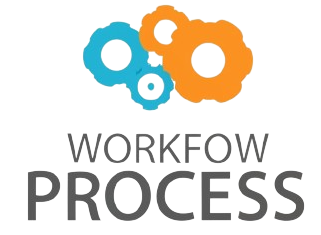Why autonomous AI needs robust governance models
As autonomous artificial intelligence systems become increasingly integrated into critical aspects of society—from healthcare and finance to transportation and communication—the need for effective governance has never been more urgent. Autonomous AI, capable of making decisions without human intervention, presents unprecedented opportunities but also significant risks. Without robust governance models, these systems can operate in ways that are opaque, unethical, or even harmful, potentially leading to unintended consequences at scale. This article explores why strong governance frameworks are essential for autonomous AI, examining the challenges posed by these technologies and outlining the key elements that must be considered to ensure responsible and trustworthy deployment.
The complexity of autonomous AI decision-making
Autonomous AI systems function by processing vast amounts of data and leveraging complex algorithms to make decisions in real time. Unlike traditional software, they adapt and learn from their environment, which introduces a dynamic and often unpredictable element to their behavior. This complexity makes oversight and accountability particularly challenging. Robust governance models need to address how decisions are made, ensure transparency of algorithms, and provide mechanisms for auditing the AI’s actions. Clear protocols for intervention must be in place when AI performance deviates from acceptable standards or leads to unintended risks. The governance framework should also account for the evolving nature of these systems, ensuring that standards keep pace with technological advances.
Ethical considerations and societal impact
Autonomous AI operates in contexts with profound ethical implications. Decisions made by such systems can affect people’s privacy, safety, and rights, potentially amplifying biases or reinforcing inequalities embedded in training data. Governance models must integrate ethical guidelines that safeguard human dignity and fairness, emphasizing accountability and inclusivity in design and deployment processes. Public trust hinges on transparency about AI decision-making and proactive efforts to prevent discriminatory outcomes. Embedding ethics into governance not only limits harm but also encourages wider societal acceptance of autonomous AI technologies.
Legal and regulatory challenges
Current legal frameworks are often ill-equipped to address the unique challenges posed by autonomous AI. The lack of clear regulations leads to uncertainty over liability when AI systems cause harm or make erroneous decisions. Robust governance models must interface with evolving laws to define responsibility among developers, operators, and users. This involves establishing standards for data privacy, safety certifications, and compliance audits, supported by enforceable accountability mechanisms. Furthermore, international coordination is vital to manage cross-border deployments and prevent regulatory gaps that could be exploited or cause inconsistencies.
Elements of a robust governance model
Designing a resilient governance model involves multiple interconnected components:
- Transparency: Clear documentation of AI decision-making processes and data sources.
- Accountability: Defined roles and responsibilities for developers and operators.
- Risk management: Continuous monitoring and mitigation strategies for potential harms.
- Ethical standards: Frameworks to incorporate fairness, privacy, and human rights.
- Legal compliance: Adherence to current laws and adaptability to new regulations.
These elements work together to create a governance ecosystem that supports the safe, ethical, and transparent functioning of autonomous AI systems.
| Governance element | Purpose | Key feature |
|---|---|---|
| Transparency | Ensure AI decision-making is understandable | Explainable algorithms, open data documentation |
| Accountability | Define who is responsible for AI outcomes | Clear ownership and intervention protocols |
| Risk management | Monitor and reduce potential harms | Real-time auditing and safety checks |
| Ethical standards | Protect fairness and human rights | Bias mitigation and inclusive design |
| Legal compliance | Align with laws and regulatory requirements | Privacy safeguards and certification processes |
Conclusion
Autonomous AI systems hold immense promise but come with risks that demand a structured and comprehensive governance approach. The complexity of AI decision-making, along with its ethical and societal implications, requires frameworks that prioritize transparency, accountability, and fairness. Current legal and regulatory challenges further underscore the need for adaptable governance models capable of ensuring compliance and mitigating harm. By integrating these elements into a cohesive governance strategy, stakeholders can build trust, minimize risks, and harness the full potential of autonomous AI in a responsible, ethical way. Ultimately, robust governance is not just a regulatory necessity—it is fundamental to the sustainable and equitable advancement of autonomous AI technologies.
